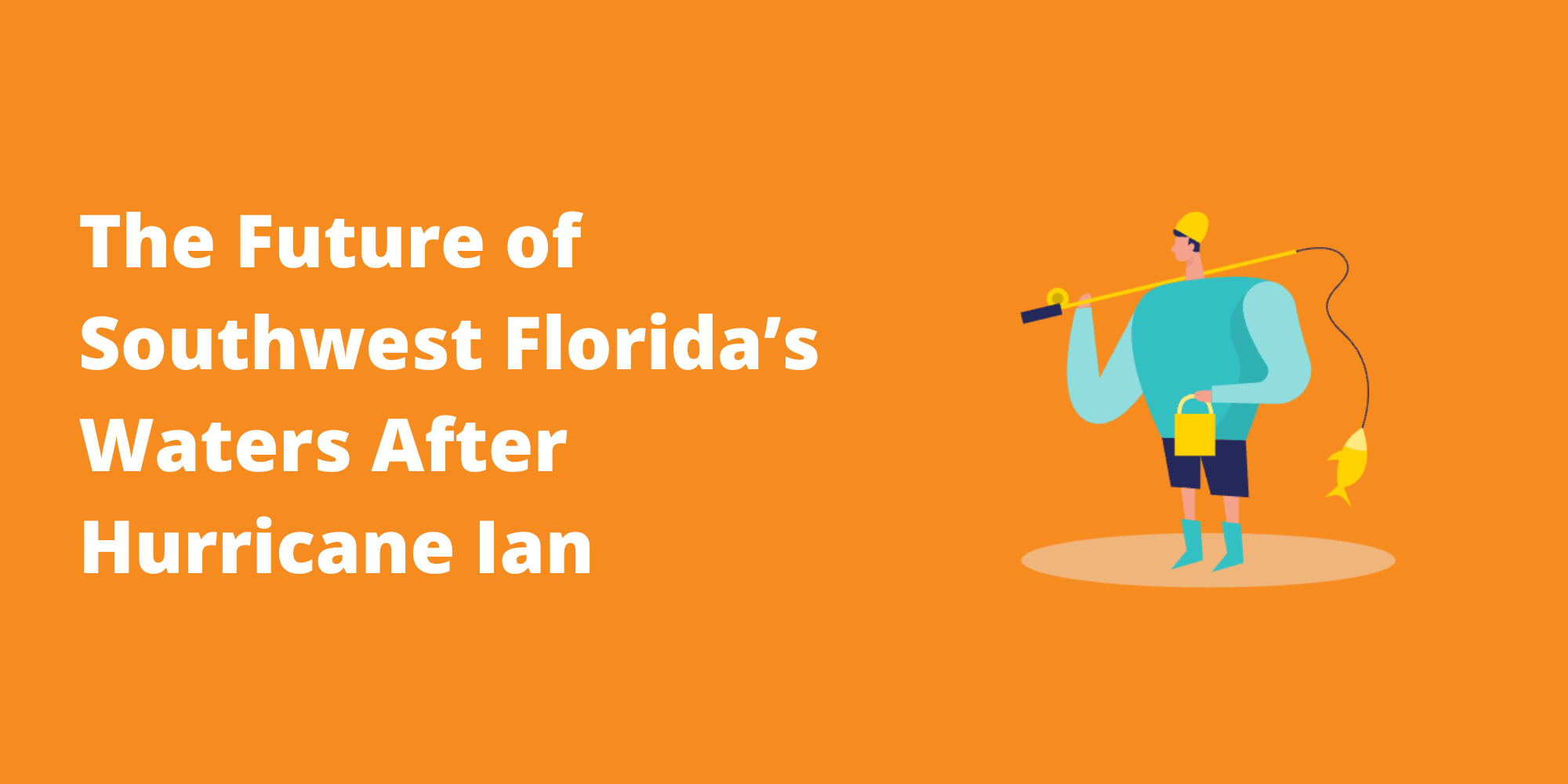The Future of Southwest Florida’s Waters After Hurricane Ian

The Future of Southwest Florida’s Waters After Hurricane Ian
By Josh Goergen, MBA
Although it has been weeks since Hurricane Ian’s landfall, Southwest Florida is still recovering from its effects. While the destruction and loss are hard to put into words, the community’s response has easily outshined the devastation. The region has done and continues to do a fantastic job at recovery and reopening. However, there are post storm effects that may linger long term and need to be top of mind for local leaders. Unfortunately, Southwest Florida may see our ongoing water quality problems intensify. Many residents remember what we saw after Hurricane Irma, a summer that filled our water ways with toxic blue green algae and our beaches with red tide.
Hurricane Ian took a toll on Southwest Florida’s infrastructure. Raw sewage and other toxic waste poured into our estuaries due to the flooding from the storm surge. Wastewater and stormwater treatment plants took a hit, septic tanks continued to leak, and a significant amount of developed land across the region faced extreme destruction. Making matters worse, storms tend to kick up legacy nutrients that have settled at the bottom our waterways which can help fuel algal blooms. Lake Okeechobee will also be affected by Tropical Storm Nicole, only adding to the problem.
Over the next few months, the region will face many tough decisions surrounding infrastructure development, funding, and other post-storm related activities. As Southwest Florida focuses on rebuilding and reopening, policymakers and other key stakeholders must remember the importance of coastal resiliency and preserving our water quality. Post Hurricane Ian, we saw certain parts of the region’s electrical grid hold up very well during the storm. This was due to all the investment into hardening regulations after previous storms hit the region. Decision makers must have that same mindset when repairing and rebuilding our storm and wastewater infrastructure. As budget decisions are being made, there must be a renewed focus on converting septic to sewer in Southwest Florida’s most vulnerable areas. It was only just a few months ago that an FAU report found human fecal bacteria in our waterways due to old leaking septic tanks. We can’t keep loading our estuaries with the nutrients and pollution that’s found in our backyards and hope for no algal blooms. As residents of Southwest Florida, we must also do our part. We can reduce the amount of fertilizer we use, minimize the runoff from our properties, and ensure all water systems (including septic) are working properly.
It is an all-hands-on deck approach to protect and ensure our water quality after Hurricane Ian. Both local governments and private citizens can make a difference. Mother nature can be unpredictable and can wreak havoc on our water, but Southwest Florida can build back stronger by focusing its investments in critical infrastructure that protects our water quality.
SWFL Inc. continues to work with elected officials and key stakeholders to solve the region’s water quality issues. If you would like to learn more about how you can help, please reach out to Josh@swflinc.com or visit swflinc.com/economic-development.
